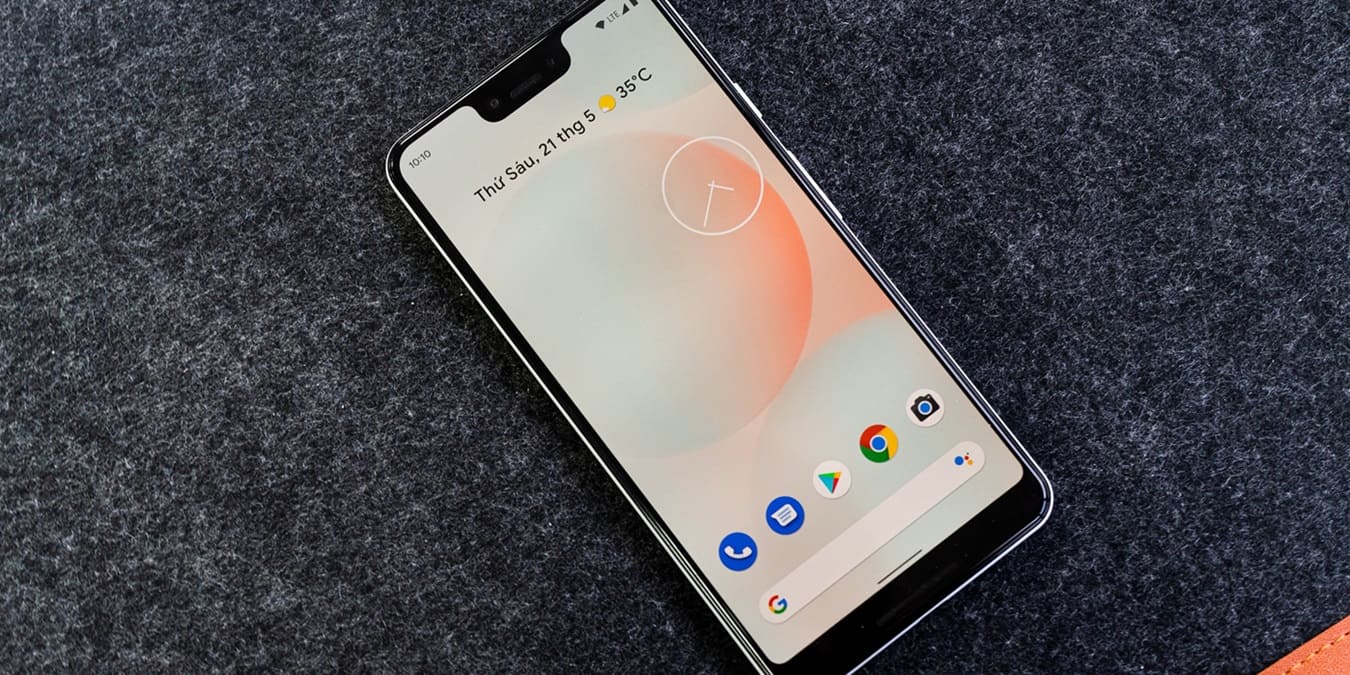
Have you ever downloaded an app, only to realize later when launching it that it’s not compatible with your Android phone? Checking your Android version and other specifications beforehand can help you avoid this situation. If you’re unsure of how to do that, this post shows how to check your Android version and other system information.
Good to know: if you just purchased an Android phone from a carrier, you may want to unlock your new device. Learn how to get started with this process.
How to Check Your Phone’s Android Version
To check which version of Android your phone is currently running, you will have to go through the Settings app. Note that the version of Android that your phone might have had onboard when you first purchased it may not be the same version that’s now operating on your device. It’s important to check your current Android version before installing a new app.
Open the Settings app on your phone. Typically, you will see the app on your home screen, but if you don’t, swipe down from the top of your Android device, and tap the gear-shaped icon that appears underneath the Quick Settings toggles.
Swipe to the bottom, and go to the About phone section.
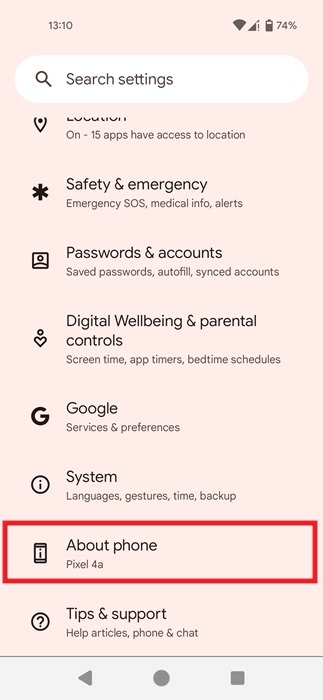
Look for the Android version section to check which version your phone is running. Tap on it to view more information, such as the build number of the current version or when your phone received the last Android security update. You may also be able to see the custom skin version if your phone comes with one (for instance, if you have a Samsung or OnePlus phone).
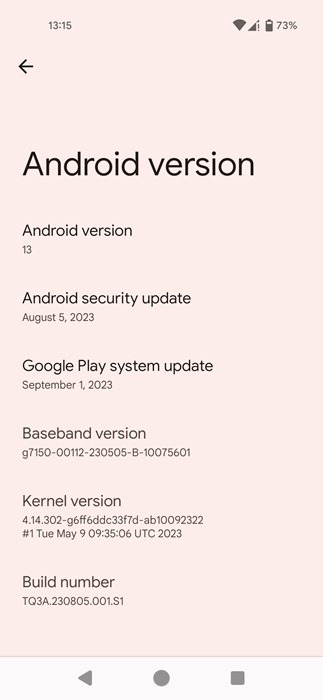
To check whether there are any new software updates for your device, go back to the Settings page, and tap on System -> System update. Press the Check for update button to see whether you can upgrade your software version. If there’s an update pending, we recommend installing it right away.
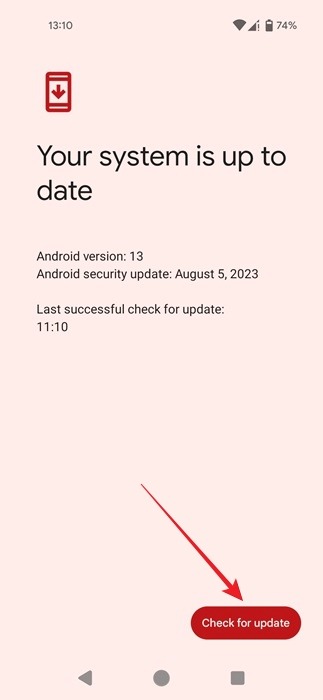
Checking App Compatibility
Now that you know the Android version running on your device, check whether the app you’re about to install is compatible with your system.
Find the app in the Google Play Store, then the About this app section, and press on the -> icon.
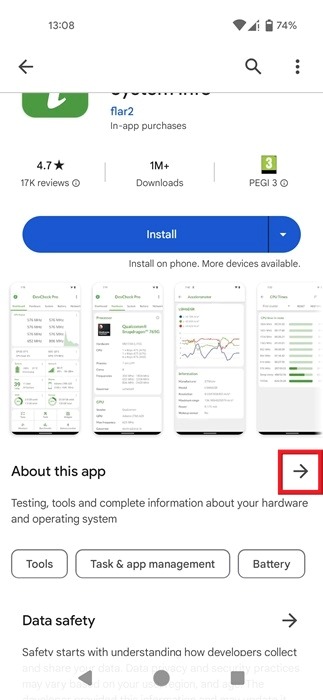
Swipe down to the App info section, and check the Required OS to make sure the app is compatible with your device.
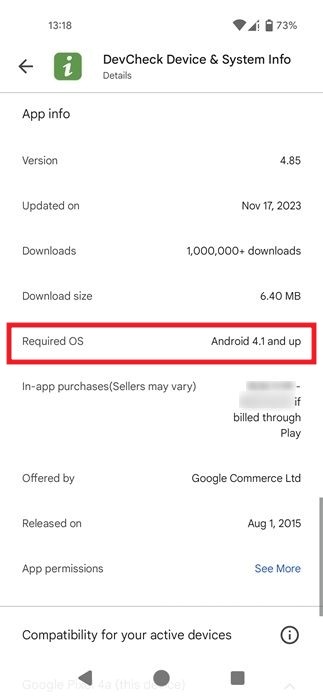
FYI: seeing the “Something went wrong try again” error message in Google Play Store? Learn how to make it go away.
How to Check Your Phone’s Model Number and Other Specs
If, for whatever reason, you need additional info regarding your phone, access that via one of these methods.
Via Settings
Open Settings -> About phone, and find the Model section to check your device’s phone model. You can also view information about the phone’s serial number and hardware version.
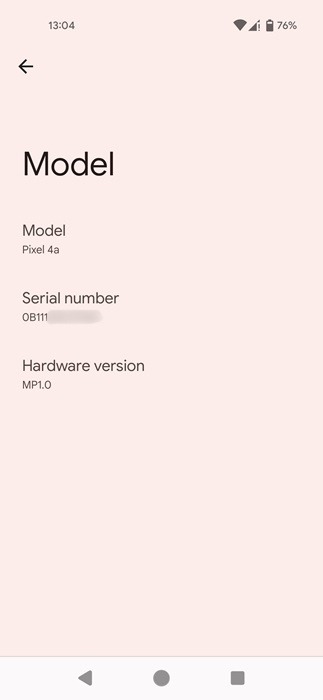
You can also check the IMEI section to view your device’s IMEI number. This stands for International Mobile Station Equipment Identity, and this number is used to identify individual devices on a mobile network. Knowing your phone’s IMEI number can prove essential for various purposes, such as tracking a lost or stolen phone or preventing a device from accessing a network if it has been reported as stolen. You might also need it for warranty and service-related issues.
For more information regarding IMEI numbers, check out our post that answers hot questions such as “Can the Government Use My IMEI Number to Track Me?”
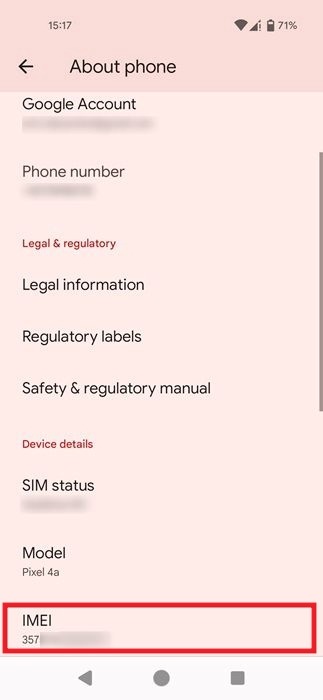
We should also note that depending on your Android model, the About phone section might include information about the phone’s specs, including CPU, RAM, and display details.
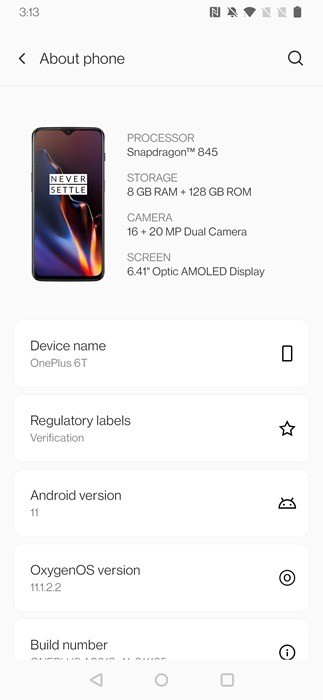
Tip: check out these essential Android apps that you may want to install on your phone.
Use a Third-Party App
If you don’t want to fiddle with the Settings app or can’t see device specs, you may want to install a third-party app and have that information available in one place.
For instance, Device Info is an app that offers a comprehensive overview of your device. With a highly accessible interface, it provides system information organized by categories, such as:
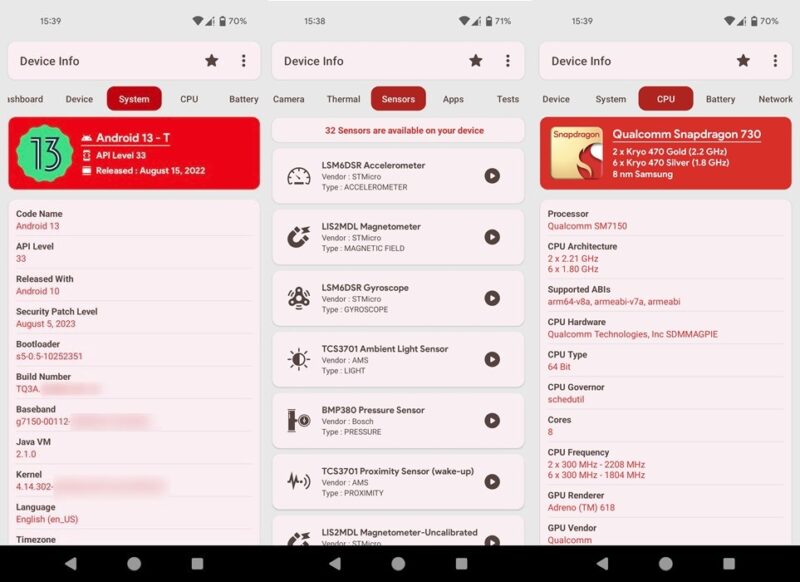
- Device – includes model, manufacturer, board, hardware, device ID, build fingerprint info, and more.
- System – includes Android version, API level, bootloader, build number, kernel information, and more.
- CPU – lists processor details, CPU architecture, Cores, CPU frequency, GPU renderer information, and more.
- Network – provides IP address, Gateway, Subnet Mask information, and more.
- Sensors – displays information about all your phone’s sensors, including Accelerometer, Gyroscope, Proximity sensor, and more.
The app also offers data on your phone’s camera, battery, temperature, apps, etc. RAM information is available on the main screen (Dashboard). It even allows you to run tests on your Android to assess the accuracy of some of its features, such as light sensor, accelerometer, or Bluetooth.
If you don’t like Device Info for some reason, there are other apps you can try, such as Inware and CPU-Z. All apps mentioned are free to download and install, but Device Info and CPU-Z have ads that can only be removed by making a donation.
Check Online
If you don’t feel like installing another app on your already full Android device, it’s possible to view all of this info online.
First, you may want to search on your phone manufacturer’s official website for details about the phone.
For instance, if you own a Pixel 8 and wish to access all the data regarding its specs, visit Google’s official Store page. Information such as IMEI is not available, though, since that’s specific to your own unique device.
Depending on the manufacturer, product pages may include more or less information. If you’re not satisfied with the data you’ve found on your phone’s official page, check the GSM Arena database for a comprehensive list of specs. This includes data such as hardware and sensor information, as well as the Android version the device originally ships with.
FYI: plagued by annoying ads? Try these apps to remove them from your Android device.
Knowing Every Aspect of Your Device
Knowing the current software version on your Android device and whether it is scheduled to receive any new updates is crucial in deciding whether it’s time to upgrade to a newer model. If you’re in the market for a new Android, check out our list of the best budget Android phones. If you’re looking for a small portable phone instead, take a look at these options.
Image credit: Unsplash. All screenshots by Alexandra Arici.
Our latest tutorials delivered straight to your inbox